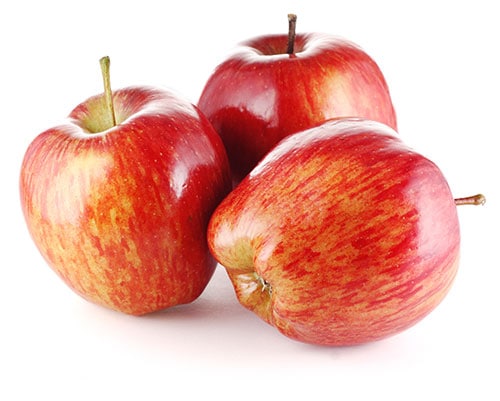
Cities are different and diverse. From Aachen to Zanzibar, cities encompass human habitations that differ substantially from one another and have a great deal of internal social variety. Cities vary in size, population structure, economic and industrial specialization, forms of governance, as well as habitation and transportation structure. Given these many varying factors, we can reasonably ask: What shared urban characteristics will help us understand them and minister effectively in the city?
First, a city is by definition a dense concentration of human inhabitants in a limited space. Human beings have material needs that must be satisfied daily: fresh water, food, shelter, clothing, and fuel. They must have developed logistical systems for supplying residents with food, clean water, sanitation, and other basic necessities.

A second feature is the need for manufacturing and income production. This implies a social organization that supports employment and occupations. This suggests that cities must possess some organized system of transportation.
Third, cities are likely to bear the signature of the social inequalities of wealth and power that are interwoven in their histories.
Fourth, cities require formal systems of governance and law. Cities are too large and complex to function as informal arrangements. Instead, there need to be ordinances for public health and safety, maintenance of public facilities, land use processes, and rules of public safety.
Finally, all cities are made up of a multiplicity of neighborhoods or subvillages that are distinctive from each other. Sociologists, anthropologists, and urban specialists have a field day observing how urban neighborhoods develop, change, grow, split, and restructure themselves over time. In any of the multiple subvillages/neighborhoods of any major city we may find people with a variety of ethnicities, worldviews, and religious identities who coexist in a limited space. Given the nature of urban neighborhoods, we Seventh-day Adventists are called to grow disciples for Christ in the climates and soils of these neighborhoods.
Jesus often used farming terminology when speaking of winning individuals for the kingdom. In His parable of the soils He referred to seed that falls on the trodden path, seed that falls on rocky places lacking depth of soil, seed that falls among thorns, and seed that falls on good soil (Matt. 13). I believe that Jesus’ intention was to make us aware of the fact that as good farmers we need to do everything possible to prepare soil for the planting of the seed so that the harvest, by God’s grace, will be plentiful.
If we follow Jesus’ farming metaphor, we come to the conclusion that gospel farming (or evangelism) is not an event but a process. Kim Johnson illustrates this well in the following parable: “Imagine a farmer who owns 500 acres of fertile land and employs 100 farmhands. His large, well-kept barn contains various pieces of seldom-used farming equipment. Corn is their preferred crop, but farm workers rarely plow, weed, or plant. They hardly ever water or fertilize. In fact, very little farming at all is done during the year—until fall. It is then that the gleaming reaper is cranked up and put into service.
"High up in the cab the farmer steers toward the intended field while the farmhands applaud vigorously. The farmer motors back and forth over the cropless ground. A few wind-borne seeds from other farms that landed on his acreage months ago have sprouted into an occasional stalk. The large reaper scoops these up and deposits them in the bin. Back at the barn the farmer pulls eight ears of corn out of the reaper and shows them to the workers. Together they rejoice over another excellent harvest. Tragically, this farmer sees farming as an annual event rather than a yearlong process.”1
If you read through a farming guide such as The Farmer’s Almanac, you discover that certain essential tasks must be done to prepare for the farming season. Three are particularly important: 1. Test the soil. Each kind of crop requires that the soil have ingredients that best nourish the intended crop. 2. Consider whether the climate is beneficial for the growth of the intended crop (palm trees don’t grow at the North Pole). 3. Understand the length of the growing season and the various stages of growth of that particular crop, so that you can schedule the stages of nurture that are necessary, such as pruning, creating support for vines or fragile young trees, or correctly anticipating the ripening process.
Our gospel farming work in city neighborhoods is like working in a botanical garden. Botanical gardens are known for collecting, cultivating, and displaying a wide range of plants from different environments around the world. This is often done by creating climate-controlled exhibits or pavilions favorable to the plant species that are being nurtured and studied.
Let’s imagine that these different plant species, along with the environments that best nurture each, are people groups in the neighborhood (botanical garden) of your church or ministry. Consider that each of these people groups presents a challenge to prepare a different ministry approach (farming plan) to nurture and grow disciples for Christ.

In the microcosm of your botanical garden neighborhood we have pavilions best suited for growing different crops in their particular climate conditions and growing seasons. Radishes have a 33-day growing season. Most varieties of lettuce have a growing season of 45 to 75 days. Dwarf apple trees will produce firstfruits in three to four years from seedling transplantation. Coconut palm trees, given proper care and growing conditions, produce their firstfruits in six to 10 years, taking 15 to 20 years to reach peak production. Black walnut trees produce their best nuts after 35 years.
Let’s face it: we all want a harvest. We all must invest ourselves in Christ’s plan to have this gospel of the kingdom preached in all the world in anticipation of the second coming of Christ (Matt. 24:14). This everlasting gospel must still go out into all the world (Rev. 14:6), including the nooks and crannies of our neighborhoods. We must plan to reach all the pavilions and fields of our proverbial botanical garden.
But too many of us face a huge temptation to satisfy our craving for harvest by limiting our farming to the fast-growing—fast-ripening—radish and lettuce fields. We often set our corporate farming practices to harvests with the shortest growing season. But perhaps we need to pay close attention to the fact that in the same neighborhood we have the privilege of nurturing apple trees, coconut palm trees, walnut trees, and other crops that require a different climate—different nurture plans and different growing seasons.
So here’s the thing: A good ministry plan (harvest plan) must start with an assessment of the proverbial soil, climate, and necessary best practices to reach each of the different people groups in your neighborhood. The Seventh-day Adventist Church, through its various departments, has a huge variety of resource materials for meeting people groups that you may find difficult to reach. Most important, develop a passion to reach those who seem out of your reach. Don’t rest satisfied that you have reached those most like you, the easiest to reach. Remember: “As the will of man cooperates with the will of God, it becomes omnipotent. Whatever is to be done at His command may be accomplished in His strength. All His biddings are enablings.”2
Gaspar F. Colón, a lifelong pastor, educator, and administrator of the Seventh-day Adventist Church in many regions around the world, serves as mission integration coordinator for Adventist Review.